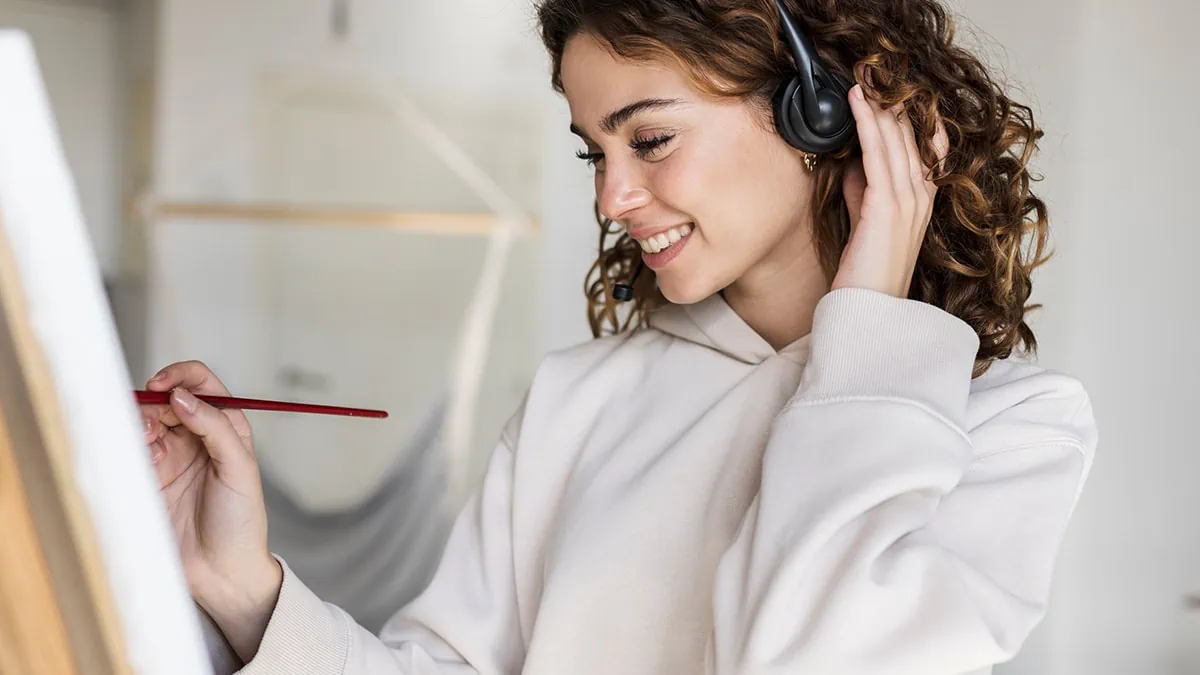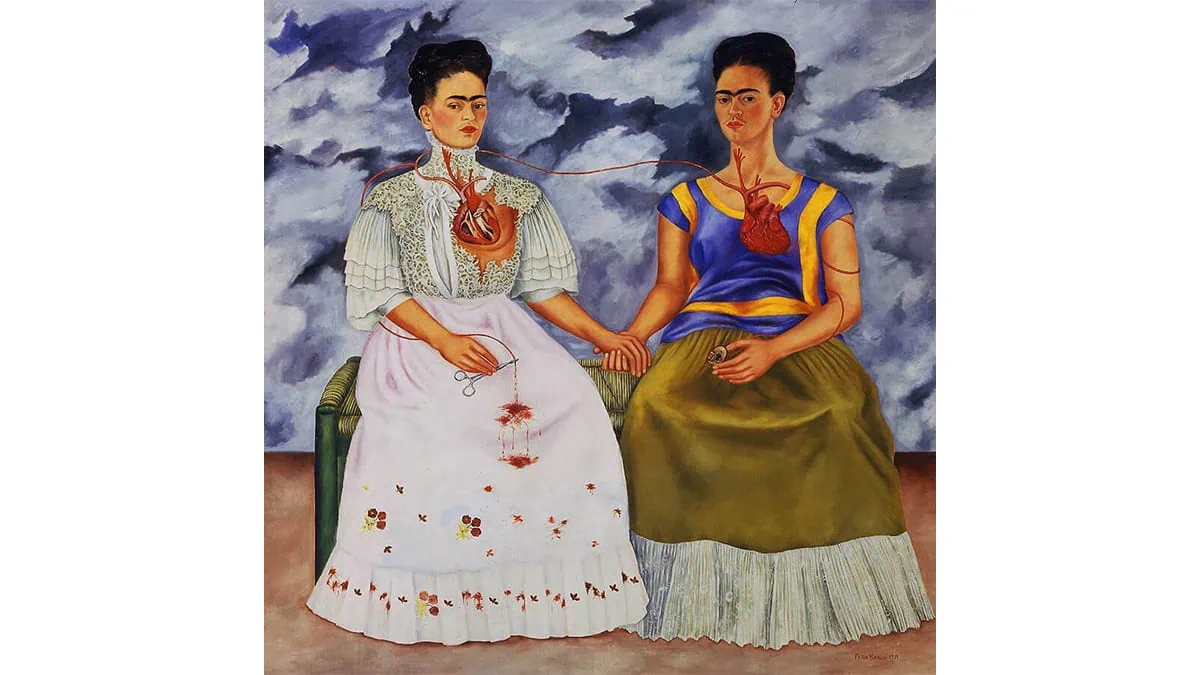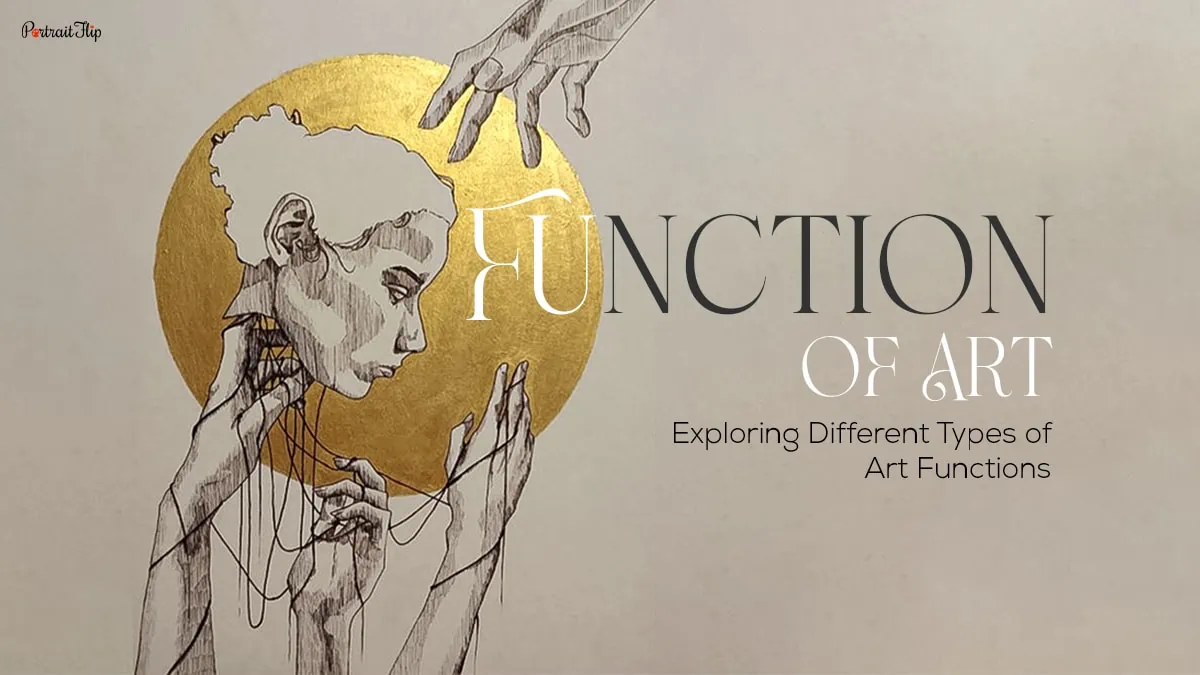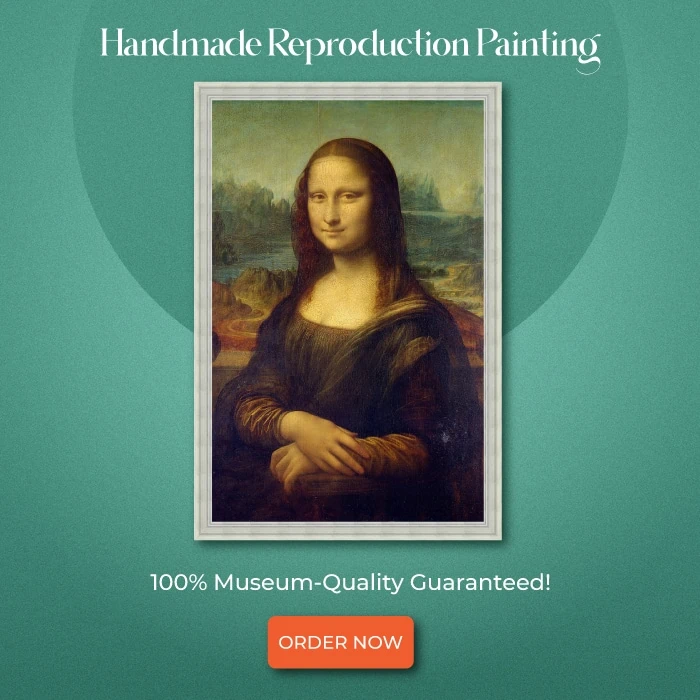Art isn’t only about creativity; it is about everything!
What we’ve seen, what we’ve heard, and what we’ve sensed—art has literally covered every aspect of our lives.
Art came to the rescue when humans didn’t even know how to speak.
It served as a tool to communicate, to learn, and to leave evidence for future generations.
As humans moved forward, the meaning of art changed, and so did its functionality.
From the first dawn of art to this date, we’ve experienced a dramatic change in the way art functions.
Several art forms exist today, with printing and paintings being the oldest ones. But to learn the functionality of art, we will take paintings into consideration.
We’ll see how and why artworks were created and what the exact function of art is.
(Also Read: Repetition in Art)
Table of contents
What is Art?
Art is everywhere. Art exists to respond to positive and negative stuff.
You can consider it a skill or activity that innovates to alter one’s views or create impact.
But do you ever wonder what the need is to create art in the 21st century?
The ancient world was different; it was the only way to communicate with peers. But today, we’ve got technology doing far better jobs than traditional mediums.
Why do artists still create paintings?
What is the function of painting/ art in today’s time?
Let’s see why we create art and what role art plays in modern times.
(Suggested: What is Rendering in Art)
Why Do We Create Art?

We create art for many reasons. Here are the main reasons:
- It’s fun, stress-free, and convenient.
- Conveys broader and deeper message with minimal effort
- Captures a moment, event, or occasion
- Tells a story and expresses ideas
- Highlights an issue in the public domain
- Garners love, attention, and support
- Enhances one’s imagination
- Spreads culture, customs, and ideologies
- Fights against injustice or manipulates masses
The purpose of art is to escalate a situation or suppress something for a better tomorrow.
But importantly, it brings people together and shapes one’s views, culture, and society.
If you look at the works of Renaissance painters, you’ll see a reflection of ancient Rome and Greek culture and ideas.
Here, art was being used to revive lost and suppressed ideas and to let artists do what was good for them.
The role of art was diverse if we looked into the paintings of Surrealism, Cubism, or Abstraction, for that matter.
We’re going to understand it in the next section.
Let’s first see the three types of functions of art.
Types of Function of Art
The function of art says a lot about its state, purpose, and style. Here are three types of functions of art:
1. Physical

The physical function of art is to provide tangible value.
For example, frescos and mural paintings were made in the Renaissance to adorn the wall of elites and patrons.
2. Social

The social function of art is to address issues concerning the masses and provide a view one has experienced in certain environments.
For example, the famous cubist artwork Guernica by Pablo Picasso
Pablo was shocked when he learned that the Germans bombed the city in Spain.
Guernica depicts several figures suffering post bombing—which was probably his first political art—to respond to an inhuman act led by Germans.
3. Personal

The personal function of art is subjective and difficult to explain.
It’s unlikely to be the same, as it enables people to form their own opinions.
For instance, the Mona Lisa, a globally praised work of Leonardo Da Vinci.
The artwork itself is a mystery; some are skeptical of the identity of the subject, and some are curious about its expression.
Whereas a good chunk of the audience creates their own version of stories when it comes to the artwork background.
I’ll provide you with another example—the most famous of Frida Kahlo’s works—“The Two Fridas” which is nothing but Frida’s accumulated thoughts based on her marriage.
How her life took U-turn after her marriage to Diego Rivera, who was also a well-known painter from Mexico.
The personal function of art provides an aesthetic experience; importantly, it entertains the audience and provokes one’s thoughts.
Taking these three types of art functions into account, we will elaborately explain the concept with the necessary examples.
What is the Function of Art?
Whether you’re from an African, American, or Asian society, you can’t deny the fact that art serves every society.
It doesn’t discriminate. It exists to express and to open one’s eyes for its own benefits.
Here are the five important functions of art:
1. Document the moments, events, and scenes

Art, for the longest time, served as a medium to record moments.
Let’s go back to some 4,000 years—prehistoric art—and see what relationship it shared with humans.
The role art played was to translate and communicate messages. Because of art, rituals, symbols, and culture were preserved and passed on to further generations.
Unlike today’s time, that has different modes and means to document the moments and events.
Art preserved by ancient folks helped our researchers, anthropologists, historians, and archaeologists learn more about humans—from a time when technology was just an illusion.
2. Revive Ancient Culture and Ideas

Art documented history and helped us revive ancient culture and ideas.
If you look at any European art movements, let’s say the Renaissance, in which Raphael played a significant role.
Raphael’s artworks depicted scenes from Jesus times; he demonstrated Biblical figures in different settings to spread cultural ideas and religious lessons.
We can now store cultural ideas and beliefs with the aid of photography or videography, but old times were different; painting played a key role in reviving historical scenes and figures. Basically, to revive what existed for a very long time.
3. Shape Art and Culture

The way art was perceived one time wasn’t the same as the next.
If you look at Impressionism and Cubism, you’ll see the latter demonstrates the figures in geometrical shapes, whereas the former uses accurate images.
The most famous Impressionist artworks were made using different weather conditions and angles to show the same scenes with various effects. Why? To develop a new perspective every time you view it.
Cubism, on the other hand, used lines, shapes, and forms to depict images. Why? To let artists produce paintings in their own way, abandoning the existing art style.
There’s a change in artistic approach. Therefore, there were differences in the way art was produced, consumed, and promoted.
The meaning and function of art kept changing as per the needs and convenience of artists.
Cubism and Impressionism explain why!
4. Ignite Creativity

Art never fails to enhance creativity. One’s art is a source of inspiration for another.
Leonardo’s famous art technique Chiaroscuro was widely used in works made in the 16th century.
This technique helped artists like Rembrandt, Johannes Vermeer, Caravaggio, and others produce their artworks.
Using the Chiaroscuro technique, Caravaggio produced Salome with the Head of John the Baptist, and Rembrandt produced Girl with the Pearl Earring.
Art has always fed one’s creativity and brought the best out of people!
5. Improve Mental Health

Creating paintings takes away your stress, depression, and agony.
The lives of Van Gogh and Frida Kahlo explain why.
Van Gogh was admitted to an asylum, and he did nothing but produce art.
Sketching and painting came to his rescue when nobody else had.
He began feeling better and during that period, he created world’s most renowned artwork—The Starry Night
Frida was bedridden; she couldn’t even move.
While lying in bed, she made sketches and drawings to heal from the pain caused by a road accident.
Art helped them forget their sorrow. It made them sane. It made them see life from a different lens—probably in a positive way.
How magical it is that art lets you connect with your imagination and soothe your pain without putting in real effort.
(Also Read: Rhythm in Art)
Conclusion
Art continues to act as therapy; it has gotten better with time.
The experience it delivers now and back then is different, but it matters to people living now and back then.
No matter what function of art one is into, our lives are colorless without the presence of art.
Above, we mentioned different functions of art and elaborated on how it helps us in positive ways.
Frequently Asked Questions
The function of art is to bring about change by expressing views or encouraging or condemning activities, events, or people.
The best examples of the function of art can be Two Fridas, Guernica, and the Mona Lisa, as they demonstrate its three forms: physical, social, and personal.
We create art to burn our stress, spread a message, alter views, and enhance imagination.





